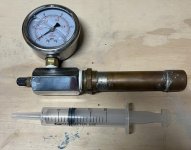Last night we published SL-00078, which covers the operation of the RV-12 and RV-12iS in high-temperature environments and with non-aviation fuels, specifically related to the prevention and recognition of fuel system vapor lock.
We also published updates to the RV-12 POH and the RV-12iS POH and FTS documents to add information about risks related to vapor lock and the need to carry an emergency egress hammer, among other changes.
After a number of vapor-lock-related incidents in a variety of airplanes, industry-wide ASTM requirements were changed to require fuel testing of Light Sport Aircraft. The results of that testing on the RV-12 and RV-12iS, as well as other aircraft and experience, resulted in the necessary changes/additions to the above documents.
Be sure to read the POH and FTS documents as applicable to your aircraft model. The information contained therein is critical safety information that you need to be familiar with. In addition, please read SL-00078, which contains a detailed discussion about vapor lock and the use of different fuels in the RV-12 and RV-12iS aircraft.
Emergency egress hammers are commonly carried in aircraft in case of the need to break the canopy to exit the aircraft in an emergency. Van's has always recommended the use of such devices, and these have been formally added to the POH for both aircraft models.
In the next few weeks, we will publish a video update that covers this topic as well. We will update this thread when that video is posted.
Thank you.
greg
We also published updates to the RV-12 POH and the RV-12iS POH and FTS documents to add information about risks related to vapor lock and the need to carry an emergency egress hammer, among other changes.
After a number of vapor-lock-related incidents in a variety of airplanes, industry-wide ASTM requirements were changed to require fuel testing of Light Sport Aircraft. The results of that testing on the RV-12 and RV-12iS, as well as other aircraft and experience, resulted in the necessary changes/additions to the above documents.
Be sure to read the POH and FTS documents as applicable to your aircraft model. The information contained therein is critical safety information that you need to be familiar with. In addition, please read SL-00078, which contains a detailed discussion about vapor lock and the use of different fuels in the RV-12 and RV-12iS aircraft.
Emergency egress hammers are commonly carried in aircraft in case of the need to break the canopy to exit the aircraft in an emergency. Van's has always recommended the use of such devices, and these have been formally added to the POH for both aircraft models.
In the next few weeks, we will publish a video update that covers this topic as well. We will update this thread when that video is posted.
Thank you.
greg
Last edited:





